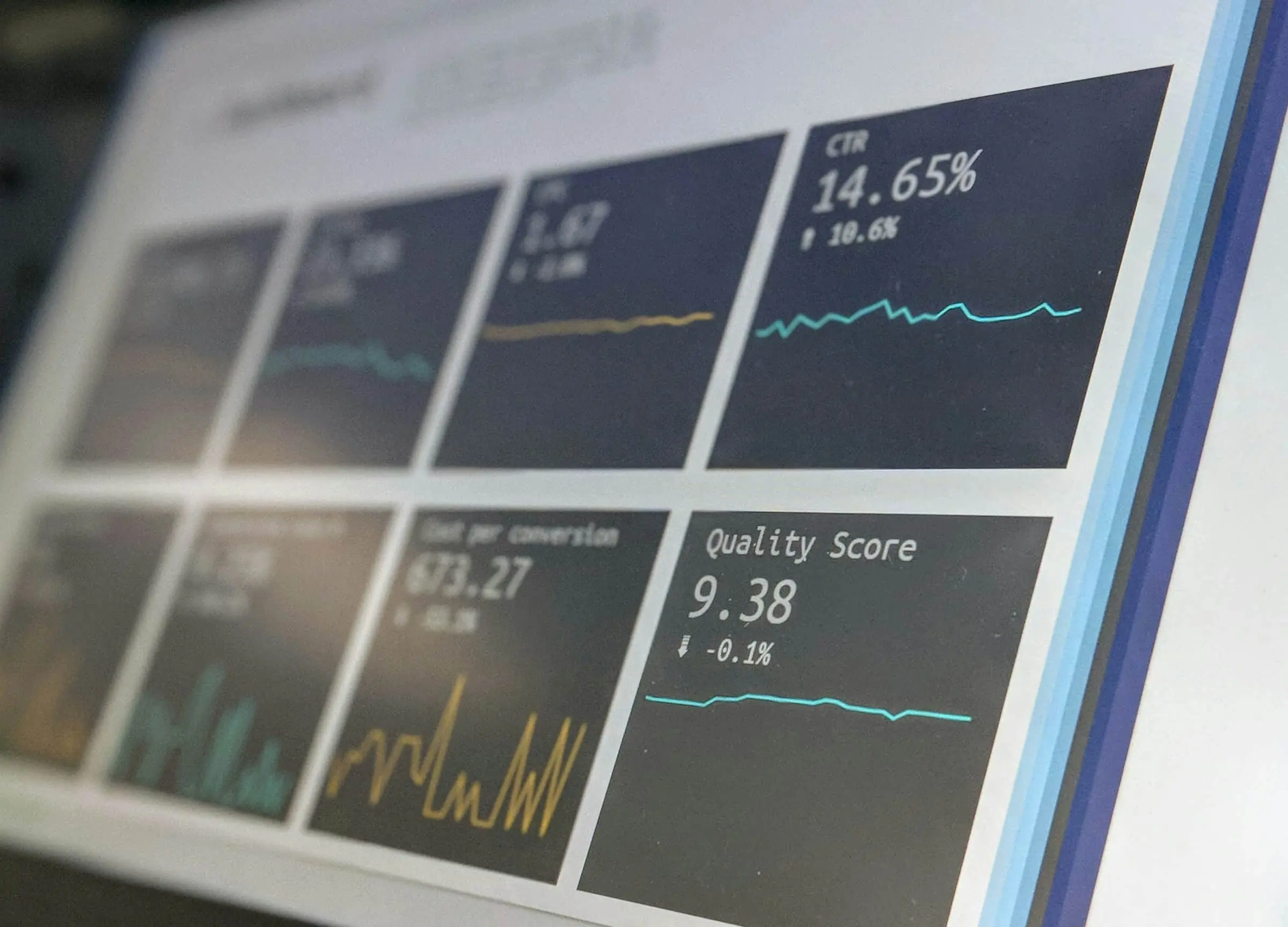How to Choose the Right AI Marketing Tools for Your Business
The AI marketing landscape has expanded dramatically, offering businesses of all sizes powerful new capabilities to enhance their marketing efforts. From content creation to customer segmentation, campaign optimization to conversion prediction, AI tools promise to revolutionize how we connect with audiences and drive results.
However, this proliferation of options creates a new challenge: how do you select the right AI marketing tools for your specific business needs? With varying capabilities, price points, integration requirements, and learning curves, making the right choice requires careful consideration.
This guide will walk you through a systematic approach to evaluating and selecting AI marketing tools that align with your business objectives, technical capabilities, and budget constraints.
Assess Your Marketing Needs and Challenges
Before exploring specific tools, take time to identify your most pressing marketing challenges and opportunities:
Conduct a Marketing Process Audit
Begin by mapping your current marketing processes and workflows. Identify areas where:
- Tasks are repetitive and time-consuming
- Decision-making relies heavily on guesswork rather than data
- Personalization opportunities are missed due to resource constraints
- Analysis is difficult but potentially valuable
- Response times lag behind customer expectations
Prioritize Your Opportunities
Once you’ve identified potential areas for AI implementation, rank them based on:
- Potential business impact (revenue growth, cost reduction, improved customer experience)
- Implementation difficulty
- Strategic alignment with your business goals
This prioritization ensures you focus on tools that address your most valuable opportunities first.
Define Clear Success Metrics
For each prioritized opportunity, establish specific, measurable outcomes that define success. Examples might include:
- Reducing content creation time by 40%
- Improving email open rates by 25%
- Decreasing customer service response time by 60%
- Increasing conversion rates by 15%
These metrics will help you evaluate potential tools and measure ROI after implementation.
Understand the Categories of AI Marketing Tools
AI marketing tools generally fall into several functional categories. Understanding these categories helps narrow your search to relevant solutions:
Content Creation and Optimization
These tools help generate, refine, or optimize marketing content across channels:
- AI writing assistants for blog posts, social media, and ad copy
- Content optimization tools that suggest improvements for SEO and engagement
- Image and video generation tools
- Dynamic content systems that personalize messaging at scale
Customer Insights and Segmentation
These solutions analyze customer data to derive insights and create more effective segments:
- Predictive analytics platforms that identify patterns in customer behavior
- Customer journey mapping tools that visualize interactions across touchpoints
- Intent prediction systems that forecast customer needs and actions
- Automated segmentation tools that group customers based on multiple variables
Campaign Optimization
These tools improve the performance of marketing campaigns:
- A/B testing automation that continuously optimizes messaging and design
- Budget allocation systems that redistribute spend to higher-performing channels
- Bid management platforms for paid media optimization
- Send time optimization for email and messaging campaigns
Conversational Marketing
These solutions enable automated, personalized conversations with customers:
- AI chatbots for website, social media, and messaging platforms
- Virtual shopping assistants
- Automated email response systems
- Voice assistants and voice search optimization
Marketing Automation and Orchestration
These platforms coordinate marketing activities across channels:
- Customer journey automation tools
- Cross-channel campaign management systems
- Trigger-based marketing automation platforms
- Personalization engines that coordinate experiences across touchpoints
Predictive Analytics and Forecasting
These tools help anticipate outcomes and inform strategic decisions:
- Sales forecasting systems
- Churn prediction platforms
- Customer lifetime value modeling
- Market trend analysis
Evaluate Key Considerations for Tool Selection
Once you’ve identified relevant categories, evaluate potential tools based on these critical factors:
Integration Requirements
Consider how each tool will connect with your existing technology stack:
- Does the tool offer native integrations with your current systems?
- What APIs are available for custom integrations?
- Will you need to modify your data collection or storage practices?
- Is middleware required to connect systems?
Tools that integrate seamlessly with your existing stack will typically deliver faster time-to-value and require less technical overhead.
Data Requirements
AI tools require data to function effectively:
- What data does the tool need to provide value?
- Do you currently collect and store this data?
- How is sensitive customer data handled and protected?
- What data cleaning or preparation is necessary?
Be wary of tools that promise amazing results but require data you don’t currently have or can’t easily acquire.
Technical Expertise Required
Consider the technical skills needed to implement and operate each tool:
- Is this a no-code solution accessible to marketers without technical backgrounds?
- Will implementation require developer resources?
- What ongoing technical maintenance is required?
- Is training available to help your team use the tool effectively?
For many businesses, tools with intuitive interfaces and minimal technical requirements will be easier to adopt successfully.
Scalability
Evaluate whether the tool can grow with your business:
- How does pricing scale with increased usage?
- Can the tool handle growing data volumes?
- Is there a clear upgrade path as your needs evolve?
- What performance limitations might you encounter?
Vendor Considerations
The company behind the tool matters as much as the technology itself:
- How long has the vendor been in business?
- What is their financial stability and funding situation?
- How responsive is their customer support?
- Do they have a clear product roadmap and regular updates?
- Can they provide case studies from businesses similar to yours?
Cost Structure
Understand the total cost of ownership, not just the sticker price:
- What is the pricing model (subscription, usage-based, tiered)?
- Are there implementation costs beyond the license fee?
- What ongoing maintenance costs should you anticipate?
- Are there cost savings from replacing existing tools or processes?
Practical Strategies for Tool Selection
With your requirements clear, use these strategies to make effective selections:
Start Small with Focused Applications
Rather than implementing comprehensive AI marketing suites, begin with targeted tools that address specific, high-value opportunities. This approach:
- Minimizes upfront investment
- Demonstrates value quickly
- Builds internal expertise and confidence
- Reveals integration or process challenges before larger implementations
Leverage Free Trials and Pilot Programs
Most AI marketing vendors offer free trials or pilot programs:
- Use these opportunities to test tools with your actual data and use cases
- Involve the end users who will work with the tool daily
- Test integration with your existing systems
- Measure results against your predefined success metrics
Consider Platform versus Point Solutions
Decide whether to pursue an integrated platform approach or multiple specialized tools:
Integrated Platforms:
- Offer consistent user experience across functions
- Typically provide seamless data sharing between features
- Reduce the number of vendor relationships to manage
- May include features you don’t need
Specialized Point Solutions:
- Often provide deeper capabilities in specific functions
- Allow you to select best-in-class tools for each need
- Can be more cost-effective for focused applications
- Require more integration work
Evaluate Ease of Experimentation
In the rapidly evolving AI landscape, the ability to experiment is valuable:
- Look for tools that allow easy testing of new approaches
- Consider whether marketers can create experiments without IT support
- Evaluate how quickly new capabilities can be deployed
Assess Transparency and Explainability
For many marketing applications, understanding how AI makes decisions is important:
- Can the tool explain why it made specific recommendations?
- Is it possible to review and modify the factors influencing AI decisions?
- How are algorithmic biases identified and addressed?
Implementation Best Practices
Once you’ve selected your AI marketing tools, follow these implementation practices to maximize success:
Develop a Phased Rollout Plan
Rather than switching to new tools overnight:
- Begin with a limited pilot involving a small team or subset of campaigns
- Document learnings and refine processes
- Gradually expand usage across teams and functions
- Continue optimizing based on feedback and results
Invest in Training and Change Management
AI tools often require new skills and workflows:
- Provide comprehensive training for all users
- Create clear documentation and process guidelines
- Identify internal champions who can support their colleagues
- Establish feedback mechanisms to identify adoption challenges
Implement Proper Measurement Systems
Ensure you can accurately measure the impact of your AI implementation:
- Set up before-and-after comparative analytics
- Create dashboards that highlight key performance metrics
- Regularly review outcomes against your success criteria
- Document both quantitative results and qualitative benefits
Case Studies: Right-Sizing AI for Different Business Types
Small Business: Local Retail Chain
Challenge: Limited marketing budget and no dedicated IT staff
Approach:
- Started with an AI-powered email marketing platform with pre-built templates and audience segmentation
- Used a simple website chatbot to handle common customer questions
- Implemented social media scheduling tool with AI-recommended posting times
Results:
- 34% increase in email open rates
- 22% reduction in routine customer service inquiries
- 15% improvement in social media engagement
Mid-Market Company: B2B Software Provider
Challenge: Growing marketing team with basic technical capabilities but struggling to scale content production
Approach:
- Implemented AI content assistant for creating product descriptions and blog posts
- Added predictive lead scoring to their existing CRM
- Deployed an AI-powered webinar engagement tool to improve lead qualification
Results:
- 3x increase in content production without adding headcount
- 27% improvement in sales team efficiency by focusing on higher-quality leads
- 41% increase in qualified leads from webinar programs
Enterprise Organization: Financial Services
Challenge: Large customer database with untapped segmentation potential and strict regulatory requirements
Approach:
- Deployed an enterprise customer data platform with AI-powered segmentation
- Implemented a compliant conversational AI system for customer service
- Added predictive analytics for customer lifetime value and churn prediction
Results:
- Created 54 new actionable customer segments
- Reduced customer service costs by 31% while improving satisfaction scores
- Increased retention of high-value customers by 18%
Conclusion: Creating Your AI Marketing Roadmap
Selecting the right AI marketing tools is not a one-time decision but an ongoing process of evaluation, implementation, and refinement. By taking a methodical approach focused on your specific business challenges, you can avoid both shiny object syndrome and analysis paralysis.
Start by understanding your unique marketing needs and priorities. Then evaluate potential tools based on integration requirements, data availability, technical expertise needed, scalability, and cost structure. Begin with focused applications that address high-value opportunities, and expand your AI capabilities as you demonstrate success.
Remember that the goal isn’t to implement AI for its own sake, but to solve real marketing challenges and create better experiences for your customers. The right AI marketing tools are those that align with your business objectives, fit within your technical and resource constraints, and deliver measurable improvements to your marketing outcomes.
By following this systematic approach, you can navigate the complex landscape of AI marketing tools and build a technology stack that drives meaningful results for your business.






